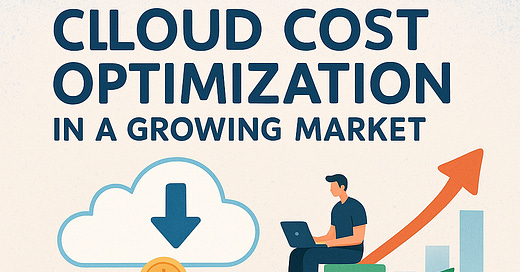As businesses scale in today’s dynamic market, cloud adoption continues to surge, offering unmatched flexibility and innovation. However, unchecked cloud spending can spiral, eroding budgets and stalling growth. For IT leaders, mastering cloud cost optimization is no longer optional—it’s a strategic imperative. This blog post explores practical tips and essential tools to help IT leaders manage cloud costs effectively while supporting business expansion.
Why Cloud Cost Optimization Matters
Cloud spending is projected to exceed $1 trillion annually by 2030, driven by the rapid shift to hybrid and multi-cloud environments. Yet, studies show that up to 30% of cloud budgets are wasted due to overprovisioning, unused resources, and lack of visibility. For IT leaders, optimizing costs ensures:
Financial efficiency: Freeing up budgets for innovation and growth.
Operational agility: Aligning resources with business needs.
Stakeholder confidence: Demonstrating fiscal responsibility in a competitive market.
With markets growing and cloud complexity rising, proactive cost management is critical to staying ahead.
Key Tips for Cloud Cost Optimization
1. Gain Visibility with Centralized Monitoring
You can’t optimize what you can’t see. Use cloud management platforms to gain real-time insights into usage, costs, and performance across all cloud providers. Tools like AWS Cost Explorer, Azure Cost Management, or Google Cloud’s Cost Management provide granular dashboards to track spending patterns and identify waste.
Actionable Step: Set up tagging policies to categorize resources by project, department, or environment. This improves cost attribution and highlights inefficiencies.
2. Right-Size Resources
Overprovisioning is a common culprit of bloated cloud bills. Regularly audit compute instances, storage, and databases to ensure they match workload demands. For example, downsizing an oversized EC2 instance or switching to a lower-tier database can yield significant savings.
Actionable Step: Leverage tools like CloudHealth or Spot by NetApp to analyze usage trends and recommend right-sizing opportunities.
3. Embrace Reserved Instances and Savings Plans
For predictable workloads, reserved instances (RIs) and savings plans offer substantial discounts compared to on-demand pricing. AWS, Azure, and Google Cloud all provide flexible options to commit to long-term usage in exchange for cost reductions of up to 70%.
Actionable Step: Use forecasting tools to identify stable workloads suitable for RIs or savings plans, balancing flexibility with savings.
4. Automate Resource Management
Automation reduces manual oversight and eliminates waste from idle or forgotten resources. Implement policies to shut down non-production environments during off-hours or scale resources dynamically based on demand.
Actionable Step: Tools like ParkMyCloud or AWS Lambda can automate shutdown schedules and scaling policies, cutting costs without impacting performance.
5. Foster a Cost-Conscious Culture
Cost optimization is a team effort. Educate developers, DevOps, and finance teams on cloud cost drivers and best practices. Encourage accountability by sharing cost reports and setting budget thresholds.
Actionable Step: Integrate cost monitoring into CI/CD pipelines with tools like Harness to flag expensive configurations before deployment.
Essential Tools for Cloud Cost Optimization
The right tools simplify cost management and amplify savings. Here are some top picks for IT leaders:
AWS Cost Explorer: Offers detailed cost analysis and forecasting for AWS environments.
Azure Cost Management + Billing: Provides budget alerts and recommendations for Azure users.
Google Cloud Cost Management: Delivers insights and anomaly detection for GCP.
CloudHealth by VMware: A multi-cloud platform for cost, usage, and performance management.
Spot by NetApp: Optimizes workloads with spot instances and auto-scaling.
Apptio Cloudability: Aligns cloud spending with business goals through advanced analytics.
Emerging Trends in Cloud Cost Optimization
As the market evolves, so do cost optimization strategies. Keep an eye on:
AI-Driven Optimization: Tools like ProsperOps use AI to automate RI purchases and optimize commitments.
FinOps Frameworks: Adopting FinOps practices fosters collaboration between IT, finance, and business teams for continuous cost control.
Serverless Architectures: Shifting to serverless reduces overhead by charging only for actual usage.
TLDR
In a growing market, cloud cost optimization is a competitive advantage for IT leaders. By gaining visibility, right-sizing resources, leveraging savings plans, automating management, and fostering a cost-conscious culture, organizations can maximize cloud value while minimizing waste. Pair these strategies with powerful tools like AWS Cost Explorer, CloudHealth, or Spot, and stay ahead of emerging trends like AI-driven optimization and FinOps.
Start small, iterate often, and empower your team to drive efficiency. The cloud is your engine for growth—optimize it wisely.




